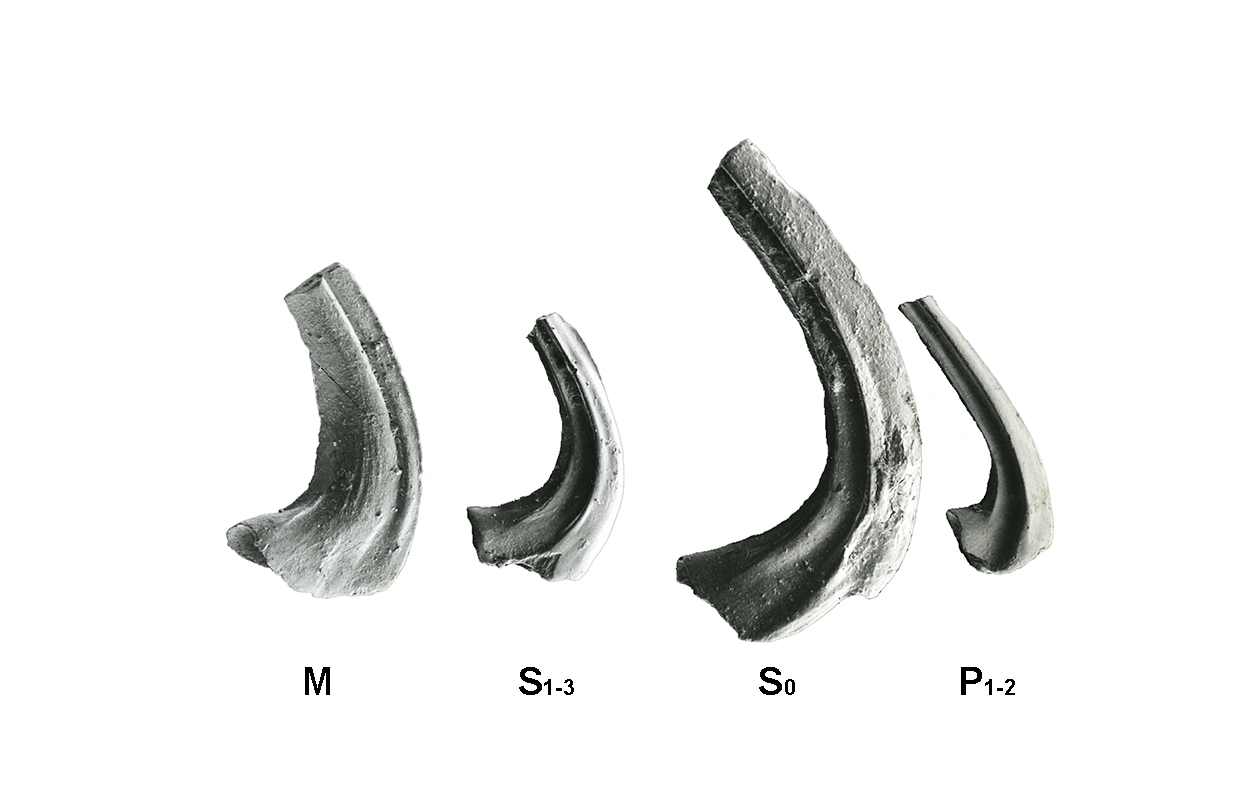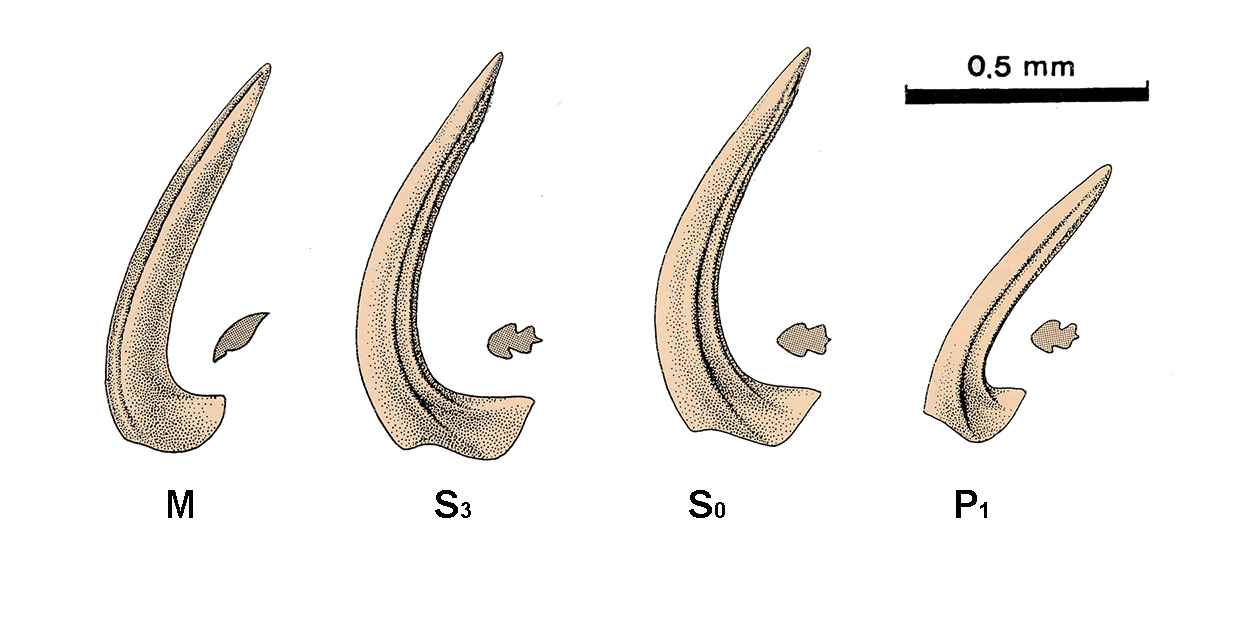Protopanderodus gradatus Serpagli, 1974
Sugerowana cytacja: Moczyński 2018. Protopanderodus gradatus Serpagli 1974. Ikonoteka (http://ikonoteka.paleo.pan.pl/xwiki/bin/view/Species/Protopanderodus+gradatus)
Diagnoza The M elements have a shallow furrow on the posterior surface along the external margin. In other elements, deep furrows split the flanks into rounded ribs. Porównanie The type population of the species is the oldest one known (early Volkhovian) and it seems to have primitive morphologic features that are mainly expressed in less sinuous bases of the elements than in younger (early Kundan) populations. Otherwise all the element types in the Argentina population seem to be virtually identical with those in the Baltic and Polish ones. Autekologia Występowanie geograficzne Zasięg czasowy Occurs somewhat irregularly in the Mójcza limestone from 0.7 m below the Materiały muzealne Literatura Dzik, J. 1994. Conodonts of the Mójcza Limestone. In: J. Dzik, E. Olempska, & A. Pisera. Ordovician carbonate platform of the Holy Cross Mountains. Palaeontologia Polonica 53, 43-128. |
|


